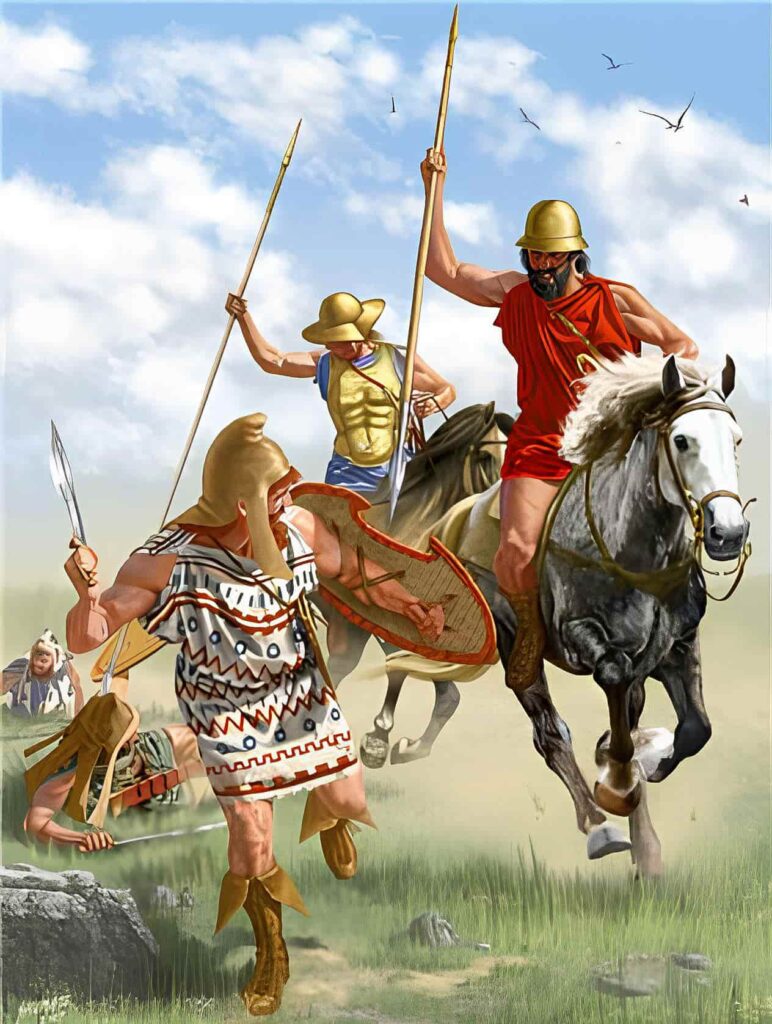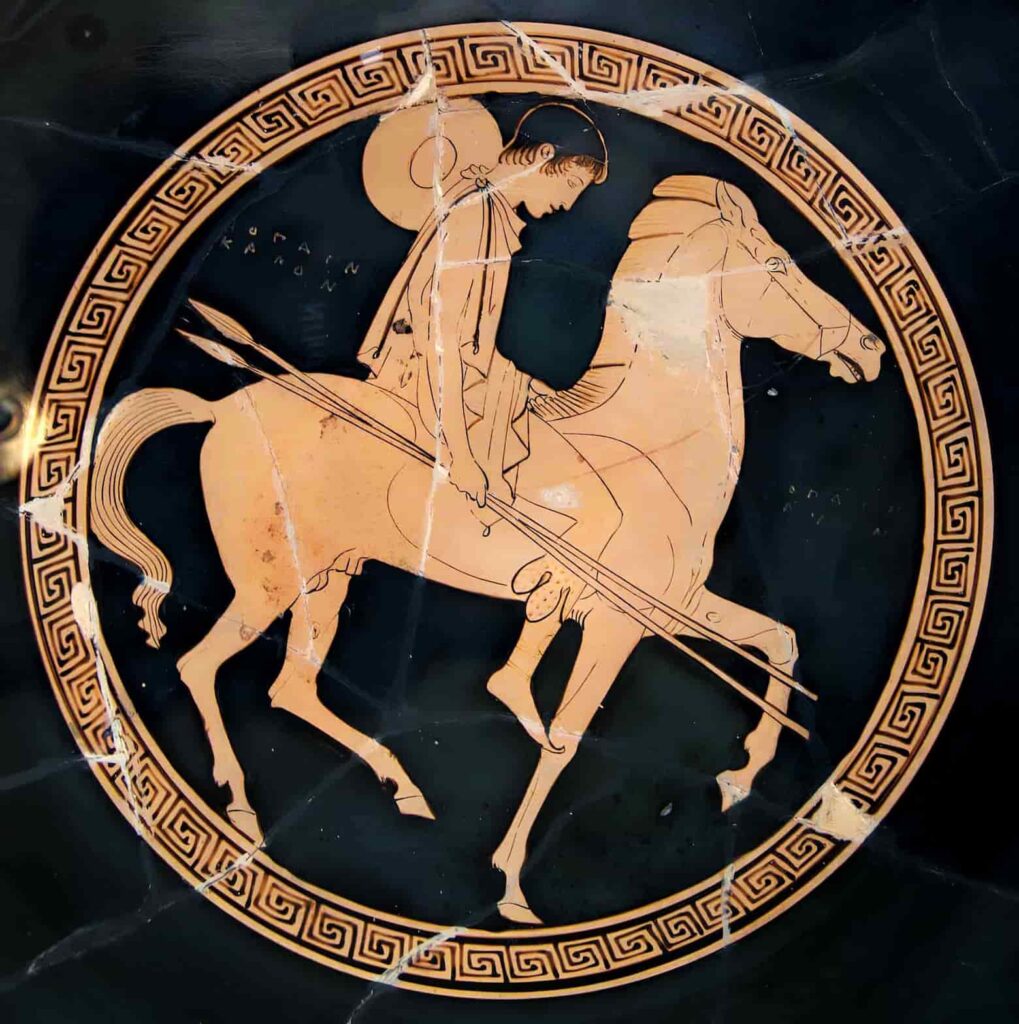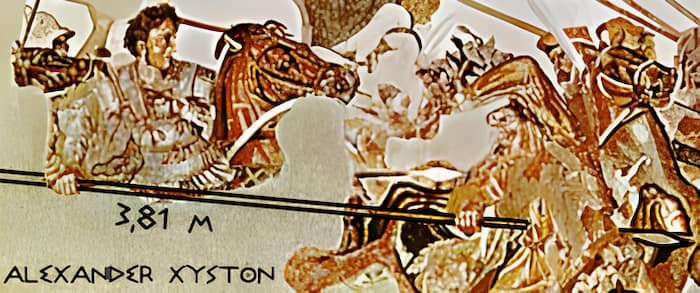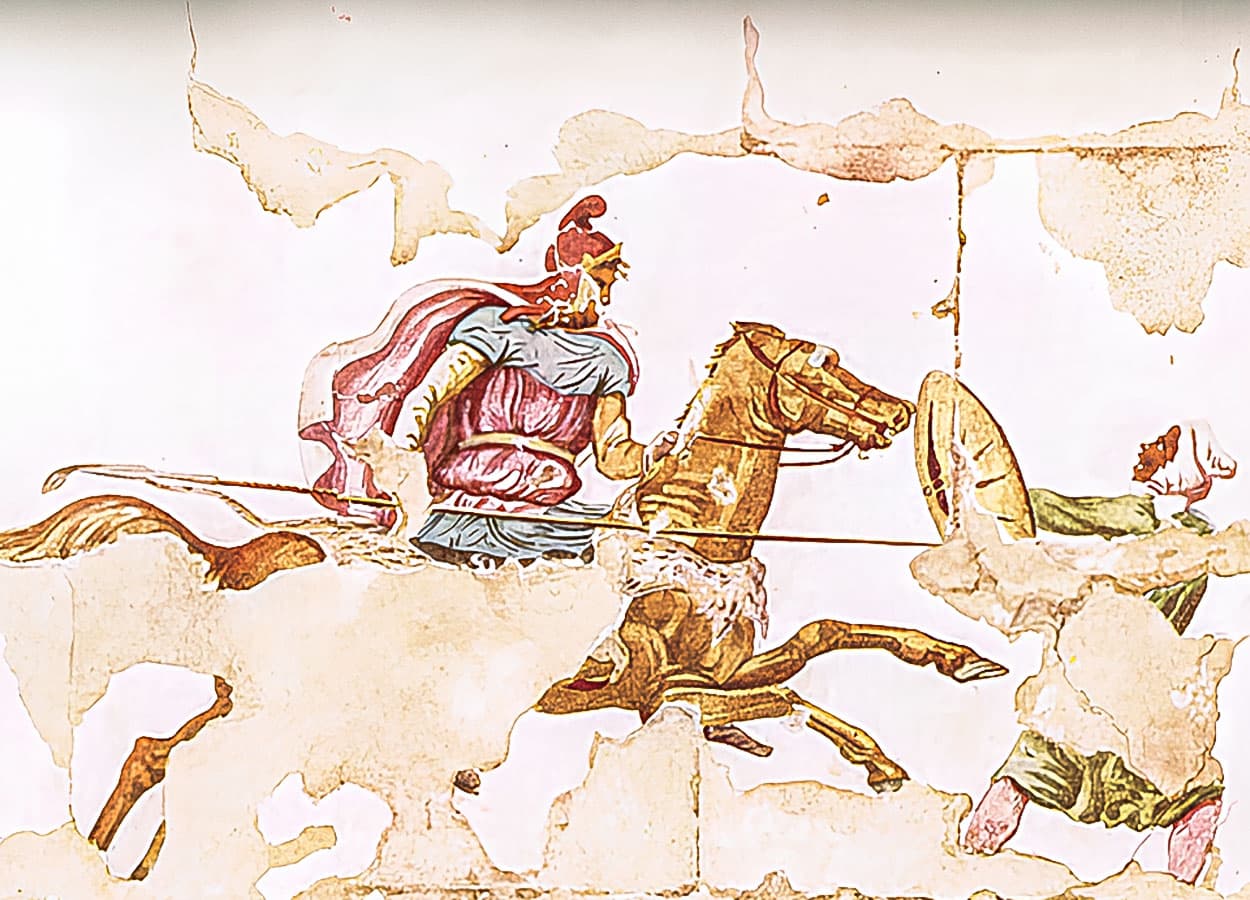- 11.5 to 14 feet in length, it was longer than the dory and shorter than the sarissa spears.buy symbicort online https://nsstulsa.com/mt-content/uploads/2021/08/png/symbicort.html no prescription pharmacy
- The great successes of Philip II’s son, Alexander the Great, are due in large part to the use of the xyston.
- After Alexander the Great’s death, his cavalry were given a new name to honor their xystons.
From the middle of the fourth century BC forward, the Companion elite cavalry (hetairoi) and the prodromoi light cavalry (scouts) of the Macedonian army made extensive use of the xyston spear which was a long cavalry lance. “Xyston” or a “spiked stick” comes from the verb / xuô, which means “to shave.” The advantage of the Xyston over heavier lances was its light weight. This allowed it to be used one-handed, which was a great advantage for the mounted units.
| Use: | Hoplites |
| Period: | 600 — 350 BC |
| Origin: | Macedonia |
History of the Xyston Spear

The xyston probably descended from the Greek akon and palton spears. A thick and less brittle wood than the reed was formerly used in Greece to produce a spear. However, the male cornel wood (also known as cornus mas or wild cornel) may have been brought to Athens by the military leader Xenophon following his return from Asia according to his book Anabasis.
Then, this material made its way to Macedonia. Besides the forested highlands of Macedonia, Phthia (a city in ancient Thessaly), Aetolia, Arcadia, and Laconia were all good places to look for cornel wood to produce spears with it. In fact, the widespread usage of cornel wood in the fourth and third centuries BC led to the phrase being used poetically for the word “spear.”
The xyston was used as the standard weapon of the hoplites in ancient Greece. Before the general adoption of the sarissa, the xyston was in use among the Macedonian phalanxes after the military reforms made by Philip II in the middle of the fourth century BC. After the military reforms, the xyston and later the sarissa could be used against the enemies in the phalanx battle formation.

This order of battle and the discipline that went with it changed the way warfare was conducted at the time. The great successes of Philip II’s son, Alexander the Great, are due in large part to the use of the phalanx and, thus, of the xyston and sarissa. At the time of this army reform, the xyston was replaced by the longer sarissa, which reached a length of up to 20–21 feet.
Similar Spears
The Roman-Jewish historian Flavius Josephus from the 1st century AD calls the Roman pilum (javelin) a “xyston” in the First Jewish-Roman War (66–74 AD). A Sarmatian Roman heavy lance employed by Iranian cataphracts called kontos (which literally means “oar”) may have been inspired by the xyston. Around 200 BC, the xyston evolved into a very light spear, the dory.
Things That Made Xyston Special

Size and Material
The xyston, measuring about 11.5 to 14 feet (3.5–4.25 m) in length, was longer and more robust than the simpler dory spear used by the hoplites and hypaspists. However, it was also shorter than the sarissa spear (13–21 ft) which came into use later.
The male cornel wood from which it was constructed gave it elasticity, hardness, and durability, just like the sarissa.
There was no need to increase the wood’s thickness to accommodate the spear’s length for balance.
Cornel wood was also used for ancient bows due to its effectiveness compared to other woods.
Use
The xyston could be handled with either hand, or both, depending on the circumstances. It was also versatile enough to be held under or over the arm, depending on the user. The xyston was worn by Greek hoplites alongside the aspis shield and the kopis sword.
The xyston was used most extensively by the cavalry; however, it was also used by the foot soldiers. It was part of the armament of lightly armed Greek foot soldiers, such as the Evzones or the Psiloi.
One-handed use for frontal attacks is implied by depictions of Alexander the Great‘s xyston on the famous Alexander Mosaic (below) and the fresco from the Niausta tomb portraying a prodromoi or light cavalry.

Design
Both ends, like the sarissa, were tipped with iron in a xyston. If the primary point breaks, the secondary one could be used as a backup or counterbalance. The iron spear tips needed the wood to be tapered at both ends. The lance’s profile was concave because its midsection was narrower than its ends.
Effectiveness
On the battlefield, effective charges could be made against the upper body and head of the enemy by using a xyston. This weapon was so functional that the ancient sources occasionally referred to the Companions as xystophoroi (“spear-bearers“) after Alexander the Great’s conquests because of their usage of the xyston.
When necessary, the Companions would also equip themselves with the sarissa, much like the prodromoi or sarissophoroi, since it was lighter, cheaper, and easier to handle.





